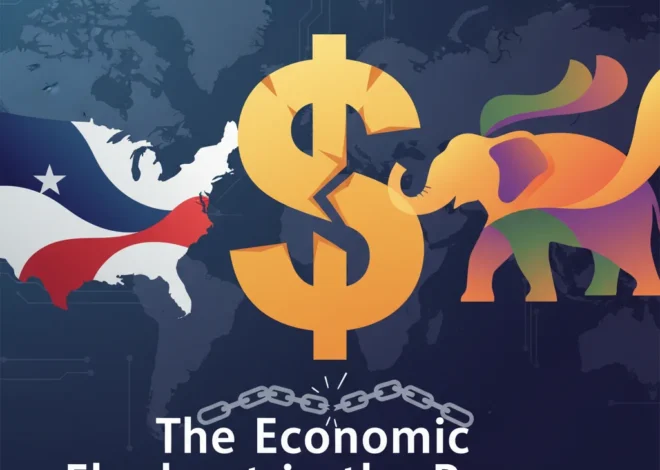
Benjamin Franklin’s Ghost in the Modern Economy: Reviving the Case for a Land Value Tax
The Wisdom of a Founder and a Forgotten Economic Tool
In the fast-paced world of modern finance, dominated by algorithmic trading, decentralized currencies, and complex derivatives, it’s easy to dismiss the economic philosophies of the 18th century as relics of a bygone era. Yet, sometimes the most profound solutions to our most contemporary problems lie dormant in the wisdom of the past. A recent letter to the Financial Times by Guy Wroble serves as a potent reminder of this, citing one of America’s most brilliant polymaths, Benjamin Franklin, to support a powerful but often overlooked economic policy: the Land Value Tax (LVT).
Franklin, a master of statecraft, science, and finance, once articulated a view on property that strikes a different chord from the staunchly individualistic rhetoric we often hear today. He stated, “Private property is a creature of society, and is subject to the calls of that society whenever its necessities shall require it, even to its last farthing.”
This single sentence encapsulates a foundational principle of the social contract: that property rights are not absolute but are granted by a community and, therefore, come with reciprocal obligations. It’s a philosophy that challenges us to rethink the very nature of wealth, value, and taxation. This post will delve into Franklin’s perspective, unpack the mechanics of the Land Value Tax it supports, explore its potential to reshape our modern economy, and examine how 21st-century financial technology could finally make its widespread implementation a reality.
Unpacking Franklin’s Philosophy: Property as a Social Construct
Benjamin Franklin’s statement wasn’t a radical call for the abolition of private ownership. Rather, it was a reflection of an Enlightenment-era understanding of the relationship between the individual and the state. In this view, the concept of “owning” land is a legal and social framework created and upheld by the community. Without society—its laws, its infrastructure, its protection—a property deed is just a piece of paper. Therefore, when society has a pressing need, such as funding public services or infrastructure, it has a legitimate claim on the value it helps create.
This perspective provides a powerful philosophical underpinning for a system of taxation that targets unearned wealth. Much of the value of a piece of land, particularly in urban areas, is not derived from the efforts of the owner. It comes from external factors: a new subway line built nearby, a well-funded public school district, a vibrant local economy, or simply population growth. This appreciation in value is a social product. Franklin’s logic suggests that it is not only fair but also necessary for society to reclaim a portion of this socially-created value to fund the very services that generated it. This stands in stark contrast to taxes on labor (income tax) or investment (capital gains tax), which can disincentivize productive activity.
What is a Land Value Tax? The Elegant Solution Explained
A Land Value Tax (LVT), sometimes called Georgism after the 19th-century economist Henry George, is a levy on the unimproved value of land. This is the crucial distinction: it taxes the land itself, not the buildings, crops, or other improvements upon it. A traditional property tax bundles the value of the land and the buildings together, meaning if you build a new home or renovate an existing one, your tax bill goes up. An LVT does the opposite—it encourages development because improvements are not penalized with higher taxes.
To understand the practical difference, consider two adjacent, identical plots of land in a city center. One owner has built a multi-story apartment complex, creating housing and vibrant economic activity. The other owner lets their plot sit empty, holding it as a speculative investment while waiting for prices to rise. Under our current system, the owner of the apartment complex pays massively higher property taxes. Under an LVT system, both owners would pay the *exact same amount* in tax, because the underlying land value is identical.
This simple shift has profound implications for the economy, investing, and urban development. Below is a comparison of the two systems:
| Feature | Traditional Property Tax | Land Value Tax (LVT) |
|---|---|---|
| Tax Base | Value of land + value of buildings/improvements | Value of unimproved land only |
| Incentive for Development | Discourages improvement (a “penalty tax” on building) | Encourages efficient land use and development |
| Effect on Speculation | Minimal cost to hold vacant land, encouraging speculation | Makes holding unproductive land expensive, curbing speculation |
| Economic Efficiency | Creates “deadweight loss” by discouraging economic activity | Considered highly efficient; does not distort economic decisions |
| Source of Value Taxed | Mix of private effort (buildings) and community value (land) | Primarily community-created value (“economic rent”) |
The 0.001% Solution: Could a Micro-Tax on Every Transaction Fix the Economy?
The Economic Case: Efficiency, Equity, and a Cure for Speculation
The theoretical benefits of an LVT align remarkably well with the principles of sound economics. In his seminal work The Wealth of Nations, Adam Smith laid out four maxims of good taxation: proportionality, certainty, convenience, and efficiency. As many economists have noted, an LVT scores highly on all four counts. Proponents argue it is the most efficient tax because the supply of land is fixed; you cannot “make less land” to avoid the tax. Therefore, the tax does not create the deadweight loss associated with taxes on production or labor, which can shrink the overall economy.
The equity argument is just as compelling. By taxing the “economic rent” of land—the surplus value generated by its location and surrounding community—LVT ensures that the public reaps the benefits of public investment. When a city invests billions in a new transit system, it is the landowners near the new stations who see their wealth skyrocket, often without lifting a finger. An LVT recycles this value back into the public coffers to fund further improvements, creating a virtuous cycle of growth and investment. According to a study by the Lincoln Institute of Land Policy, this mechanism can lead to more compact and efficient urban development.
Furthermore, an LVT acts as a powerful antidote to the kind of speculative behavior that inflates property bubbles. In many cities, prime real estate is left vacant or underdeveloped by owners who treat land not as a productive asset, but as a financial instrument akin to a stock or bond. This artificial scarcity drives up prices for everyone. By making it expensive to sit on valuable, unused land, an LVT forces owners to either develop it productively or sell it to someone who will. This increases the supply of housing and commercial space, putting downward pressure on prices and making cities more affordable.
Beyond the Crown: Deconstructing the £1M Bitcoin Scam of a Fake Royal
LVT in the Digital Age: Can Fintech and Blockchain Pave the Way?
Historically, one of the main arguments against LVT has been the difficulty of accurately assessing the unimproved value of land. How can you precisely separate the value of a skyscraper from the patch of earth it sits on? While this remains a challenge, modern financial technology (fintech) offers powerful new tools that render these old objections obsolete.
Today, AI-powered valuation models can analyze vast datasets—including satellite imagery, zoning laws, transaction histories, and proximity to public amenities—to create highly accurate and dynamic assessments of land value. This level of granular, real-time data analysis was unimaginable to Henry George or even economists a few decades ago. It transforms the assessment process from a subjective art into a transparent science, reducing opportunities for appeals and corruption.
The innovations in fintech don’t stop there. Imagine a municipal land registry built on a blockchain. Such a system would create an immutable, transparent, and publicly verifiable record of ownership, transaction history, and assessed value for every parcel of land. This would streamline the entire process of titling and taxation, drastically reducing administrative costs for government and banking institutions. Payments themselves could be automated through smart contracts, ensuring compliance and efficiency.
This technological leap could fundamentally change the dynamics of real estate as an asset class, shifting it away from the speculative, opaque nature of some trading on the stock market and toward a more transparent, productive component of the real economy.
Challenges on the Horizon: The Thorny Path to Implementation
Despite its theoretical elegance and technological feasibility, the path to implementing a widespread LVT is fraught with challenges. The most significant is the transition. Decades of economic decisions, retirement plans, and investment strategies have been built around the existing property tax system. A sudden shift could create economic shocks.
Consider the “asset-rich, cash-poor” problem. A retiree living on a fixed income in a home they’ve owned for 50 years could suddenly face a massive tax bill if their land has become extremely valuable. Any successful LVT proposal must include mechanisms to address this, such as tax deferrals for seniors or a gradual phase-in period over many years. According to a report by the OECD, transitioning tax systems requires careful consideration of social equity to maintain public support.
Ultimately, the greatest barrier remains political will. The prospect of LVT directly challenges powerful vested interests that profit from land speculation. It requires a bold, long-term vision from policymakers and a deep public understanding of the benefits. However, as housing crises deepen, inequality widens, and municipal budgets are strained, the search for smarter, fairer, and more efficient sources of revenue will intensify.
The Digital Euro: A Solution in Search of a Problem?
Conclusion: An Old Idea for a New Economic Era
Benjamin Franklin’s 18th-century insight into the nature of property remains a beacon of clarity in our complex modern world. It reminds us that economic systems are not forces of nature; they are human creations designed to serve society. The Land Value Tax, born from this philosophy, offers a compelling framework for building a fairer and more prosperous economy.
It is not a silver bullet, but it is a powerful tool. It encourages productive investment, discourages harmful speculation, funds public services with the very value they create, and reduces the tax burden on labor and innovation. With the advent of fintech, blockchain, and advanced data analytics, the practical arguments against it have never been weaker. As we navigate the economic challenges of the 21st century, perhaps it’s time to listen to Franklin’s ghost and give this old, brilliant idea the serious consideration it deserves.


